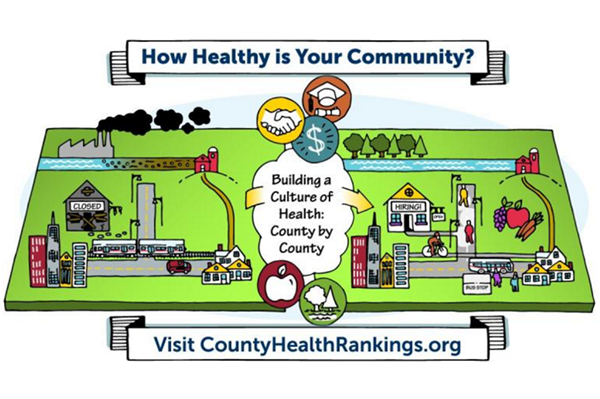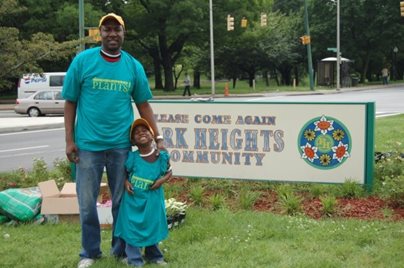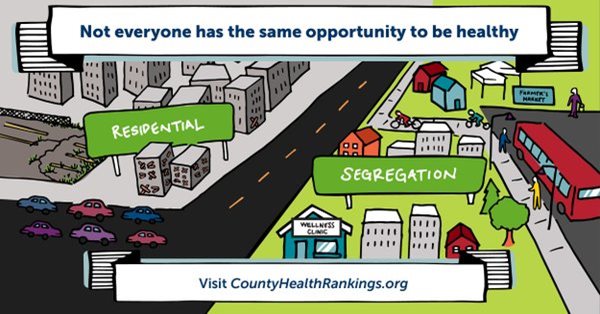In the last month, new annual County Health Rankings were released through a collaboration between the Robert Wood Johnson Foundation and the University of Wisconsin Population Health Institute—a partnership that now includes NeighborWorks America. The rankings measure everything from high-school graduation rates, to obesity, to unemployment in nearly every county in America, providing a revealing snapshot of how health is influenced by where we live, learn, work and play. They also can provide a starting point for change in communities. In this Q&A interview, I talk with Sarah Norman, NeighborWorks’ senior advisor for health, about what the rankings mean for organizations working in the community development field.

Pam Bailey: What are the rankings, and how can they help us understand what’s going on in our communities?
Sarah Norman: The County Health Rankings provide data on the interconnected factors that shape people’s health and wellbeing, such as housing, unemployment, smoking, physical activity and access to medical care.
When they are released each year, one of the first things I do is look at the community I’ve called home for the last decade – Baltimore. There’s good news and bad news for Baltimore City in the County Health Rankings. Over the past dozen years, the premature death rate has dropped by almost a third. Child poverty, on the other hand, has continued to rise and now stands at 32 percent—more than double the Maryland rate of 14 percent. And almost one in four households in Baltimore has severe housing problems, whether its affordability, overcrowding or non-functioning plumbing.
 When considering these challenges, it’s important to also think about the ways that community members, nonprofits, governments and business already are trying to tackle them. For example, Neighborhood Housing Services of Baltimore, a NeighborWorks network member, helped 158 families and individuals become homeowners with counseling. And it’s working with a team of partners —including Rebuilding Together, Civic Works, Sinai Hospital and the Green and Healthy Homes Initiative—to connect elderly residents with housing, rehab and related services so they can stay in their homes as they age. Ultimately, a coordinated approach has the potential to prevent emergency visits and hospitalizations.
When considering these challenges, it’s important to also think about the ways that community members, nonprofits, governments and business already are trying to tackle them. For example, Neighborhood Housing Services of Baltimore, a NeighborWorks network member, helped 158 families and individuals become homeowners with counseling. And it’s working with a team of partners —including Rebuilding Together, Civic Works, Sinai Hospital and the Green and Healthy Homes Initiative—to connect elderly residents with housing, rehab and related services so they can stay in their homes as they age. Ultimately, a coordinated approach has the potential to prevent emergency visits and hospitalizations.
Thanks for sharing that snapshot of the data in Baltimore… but what does the data tell us about major health trends nationally?
One of the most significant trends is the gap between rural, urban and suburban communities. Rural counties have consistently had the highest premature death rates, and they continue to increase.
This hasn’t gone unnoticed here at NeighborWorks; far from it. Among other strategies, our Safe and Sound program promotes health in rural communities by scaling up home improvements for rural residents.
This work has spurred novel partnerships with hospitals and other health partners. In Missouri, the Northeast Community Action Center is providing a holistic, integrated package of home rehab, healthy homes education and other services to individuals who have just been released from the hospital due to respiratory illnesses such as COPD and pneumonia.
Earlier in the conversation, you shared a little about what the County Health Rankings data tell you as a Baltimore resident. But I’m also interested in learning what the County Health Rankings data mean to you as a health professional working at a housing and community development organization.
The County Health Rankings have a special meaning to me. I worked in the health sector for more than a decade before coming to NeighborWorks America. Whether working on insurance rates or in public health, I often felt like I was only scratching the surface when trying to understand why people were sick or even dying. The County Health Rankings & Roadmaps offer a framework to identify all of the different factors that influence health and well-being –including residential segregation.

Residential segregation?
Yes, residential segregation has significant health implications. It’s linked to a range of poor health outcomes, including chronic diseases, infectious diseases, and infant and adult mortality.
But, I have to ask, do they help communities to solve any of these problems?
Yes, absolutely. The collaboration offers many tools and resources. One of my favorites is the “What works for Health” database. This is a compilation of evidence-based strategies that improve health outcomes. As communities prioritize health challenges, it’s helpful to have one go-to place to reference.
The County Health Ranking program also provides coaches who assist in setting up cross-sector partnerships to tackle health disparities.
So how is NeighborWorks America involved?
We recently launched a partnership with the Robert Wood Johnson Foundation to help NeighborWorks organizations use the County Health Rankings & Roadmap Action Center to catalyze local action to tackle health disparities. Twelve organizations will be paired with coaches and six will be provided with both coaching and funding to develop cross-sector partnerships to tackle the root causes of health outcomes.
There’s strong evidence in the literature that integrating health and housing can improve health outcomes, reduce housing insecurity, and cut costs to public systems like Medicaid and Medicare. For example, a recent study led by Enterprise Community Partners and the Center for Outcomes Research and Education found that moving residents into affordable housing cut Medicaid costs by 12 percent.
As someone whose expertise comes from the health world, I’ve learned a lot working in the housing and community development field. The knowledge I've acquired here has made me a better health practitioner, and we’re betting that bringing health and community development professionals together will strengthen their work in their communities.
***
- Check out your county’s health status.
- Explore what NeighborWorks is doing to help community development organizations achieve greater health impact by visiting our website. There, you will find an overview of convenings, webinars, courses and other resources.
- Learn more about County Health Ranking & Roadmap coaches.
- Find out about evidence-based strategies that improve health, including the What Works for Health database, the National Council on Aging’s evidence-based programs and the Blueprints for Healthy Youth Development programs.

